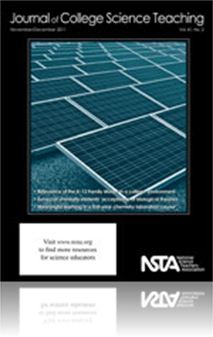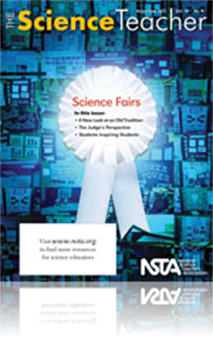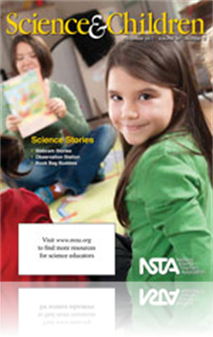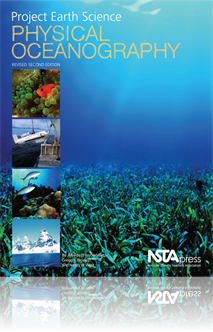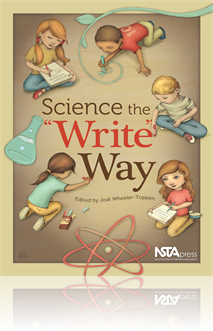All Resources
Journal Article
When Wrong Answers Receive Top Grades
This article discusses whether the education community shares a collective understanding about how students should be evaluated. ...
Journal Article
Tried and True: Using Notebooks to Aid Organization
This column provides classic demonstrations and experiments with a new twist. This month’s issue covers a notebook plan to help students get organized in the science class....
Journal Article
Effective Strategies for Engaging Students in Large-Lecture, Nonmajors Science Courses
This article reports on the impacts of changing an introductory environmental science class to move away from standard lecture delivery to increase student engagement in class. The class was designed around small-group activities, inquiry labs, and s...
Journal Article
The New Teacher's Toolbox: The Beauty of Bell Ringers
This column shares tips for teachers just beginning their career. This month’s issue discusses tactics to have a good start each day at the beginning of class....
Journal Article
Kindergarteners collect natural objects, investigate their objects, and record observations in science notebooks....
Journal Article
Science 2.0: Upgrade Your Science Fair
This column shares web tools that support learning. This month’s issue discusses Google's science fair in which students can participate by sharing their research projects on the internet....
Journal Article
Tried and True: I Scream for Ice Cream (in 45 minutes)!
This column provides classic demonstrations and experiments with a new twist. This month’s issue covers students learning about chemistry by making ice cream in a guided inquiry laboratory....
Journal Article
A teacher integrates science observations into the writing center. At the observation station, students explore new items with a science theme and use their notes and questions for class writings every day....
Journal Article
To investigate students' perceptions of learning through three categories of experiments—classical, discovery, and instrumental—six students were interviewed over the course of a semester. Students' descriptions of their learning in the laborator...
Journal Article
The Green Room: Environmental Research Projects
This column focuses on making your teaching more environmentally friendly. This month’s issue discusses doing a research project/science fair project that has an environmental focus....
Journal Article
Green Science: Revisiting Recycling
This column focuses on issues related to environmentally friendly and sustainable science. This month’s issue covers recycling....
Journal Article
Natural Resources: A Sixth Sense
This column helps bring the outdoors into your curriculum. This month’s issue talks about instilling a sense of wonder in your students....
Journal Article
This article describes a collaborative mentoring program in which graduate students from a university atmospheric science research department team-taught environmental science classes with professors in a liberal arts college. Qualitative analysis of...
Journal Article
The Archimedes Initiative is a free, online archive of videos recorded at county and state science fairs, which show students addressing their peers. This article describes the content of the website and suggests how students, teachers, and parents c...
Journal Article
Tried and True: The Incredible Growing Gummi Bear
This column provides classic demonstrations and experiments with a new twist. In this month’s issue the author describes using gummi bears to review and reinforce students' process skills....
Journal Article
Students watch science narratives unfold in real time on the internet. Students collect, sort, analyze, and digest the information, and then they create a story based on their prior knowledge and their focus as they watch....
Journal Article
University Students' Acceptance of Biological Theories—Is Evolution Really Different?
This study looked at student acceptance of important biological theories and explored the relationships between their acceptance of scientific theories and their understanding of the nature of science....
Journal Article
Scope on the Skies: We're back!
This column focuses on astronomy throughout the year. This month’s issue discusses the latest mission to Mars....
Journal Article
This study assessed the impact of science teaching laboratories designed with visual connections to spaces outside the laboratory, either to interior spaces or to the outdoors. Specifically the authors assessed student perceptions of interdisciplinar...
Journal Article
Case Study: What Killed Leah Miller: Abuse or Natural Causes?
This column provides original articles on innovations in case study teaching, assessment of the method, as well as case studies with teaching notes. In this month’s issue the authors explore brain and eye anatomy and blood clotting using a case stu...
Journal Article
T'was the Start of Science Notebooking
The authors discuss science notebooks and provide a list of approaches they have successfully implemented to introduce and reinforce science concepts. The article also includes a poem about science notebooking....
Journal Article
Using Inquiry to Break the Language Barrier
One way for ELL students to engage in inquiry is through a school science fair project or other independent research endeavor. Teachers can make simple modifications to the traditional science fair to help ELLs achieve the dual goals of mastering sci...
Journal Article
Science 101: Why Do You Lose AM Radio Reception When You Go Under an Overpass?
This column provides background science information for elementary teachers. This month’s issue talks about electromagnetic waves....
Journal Article
This article describes teaching and learning strategies that promote creative problem finding. The authors examined problem finding factors that lead to high-quality science fair projects....
Journal Article
The Early Years: Reading Stories, Making Predictions
This column discusses resources and science topics related to students in grades preK to 2. This month’s issue discusses using books to help students learn to make predictions....
Journal Article
Safer Science: Rise of the Allergens
This column provides best safety practices for the science classroom and laboratory. This month’s issue discusses allergens in the laboratory....
Journal Article
Formative Assessment Probes: Teachers as Classroom Researchers
This column focuses on promoting learning through assessment. This month’s issue discusses having teachers conduct their own study regarding students' thoughts on whether something is an animal....
Journal Article
Science Education and ESL Students
The authors examine the challenges ESL students experience in learning science and provide a lesson plan and assessment to overcome the obstacles ESL students face in the science classroom. The authors then summarize teaching strategies effective for...
Journal Article
Great Science for Autistic Students
This article discusses ways to successfully include students with Asperger's syndrome into the science classroom. Well-organized classrooms with predictable schedules and procedures provide the optimum learning environment for these students....
NSTA Press Book
Learning and Teaching Scientific Inquiry: Research and Applications
Science teacher educators, curriculum specialists, professional development facilitators, and K–8 teachers are bound to increase their understanding and confidence when teaching inquiry after a careful reading of this definitive volume. Advancing a...
By James Jadrich, Crystal Bruxvoort
eBook
Project Earth Science: Physical Oceanography, Revised 2nd Edition (e-book)
How well can your students— • Explain why ice floats? • Model ocean currents? • Predict tides? • Describe the proper clean-up of an oil spill? ...
Book Chapter
Learning to write well is a long process that comes through teacher modeling, instruction, practice, and feedback. Luckily, the writing process can be used to improve science learning, too. Here are a few good writing suggestions that integrate scien...
Book Chapter
Peanut Butter and Jelly Science
Are you feeling frustrated with the quality of your students' writing or lack there of? If so, head straight for the peanut butter and jelly. Students will respond to this fun filled activity as they learn the importance of writing clear procedures i...
Book Chapter
Effective writing is a keystone in the process of developing scientific knowledge. Scientists must be able to successfully communicate their findings so colleagues can confirm the authenticity of their claims through the replication of experiments. S...
Book Chapter
As science teachers, we must provide feedback on both the science content and quality of writing demonstrated in their assignments. Unfortunately, our schedules do not always allow us to hold individual writing conferences or ask for extensive rewrit...
Book Chapter
Despite the challenges posed by increased time, specialized vocabularies, and balance, integrating writing and drawing with science investigations are beneficial for teachers and students. This chapter explains why this integrated approach is benefic...
Book Chapter
From Speaking to Writing in the Structured English Immersion Science Classroom
In most cases, structured English immersion (SEI) has replaced bilingual and English as a second language (ESL) programs as the preferred method of educating English language learners (ELLs). As a result, science teachers need specific strategies to ...
Book Chapter
What Writing Represents What Scientists Actually Do?
This chapter addresses whether or not a report based on scientific method accurately represents what scientists do as well as what kind of writing scientists engage in that goes beyond the reporting of conclusions....



